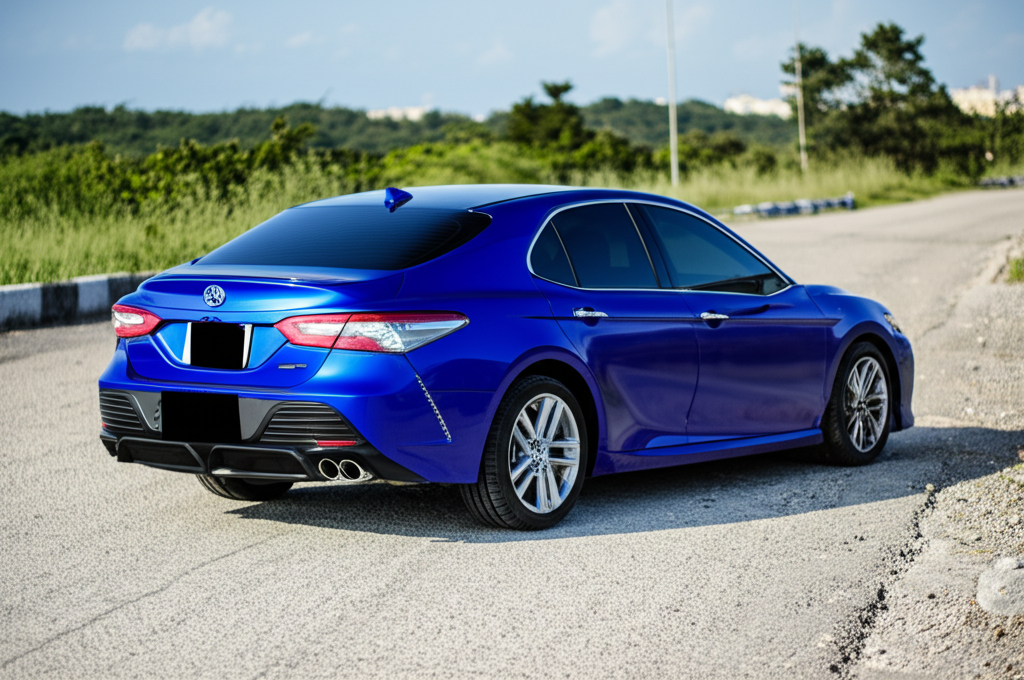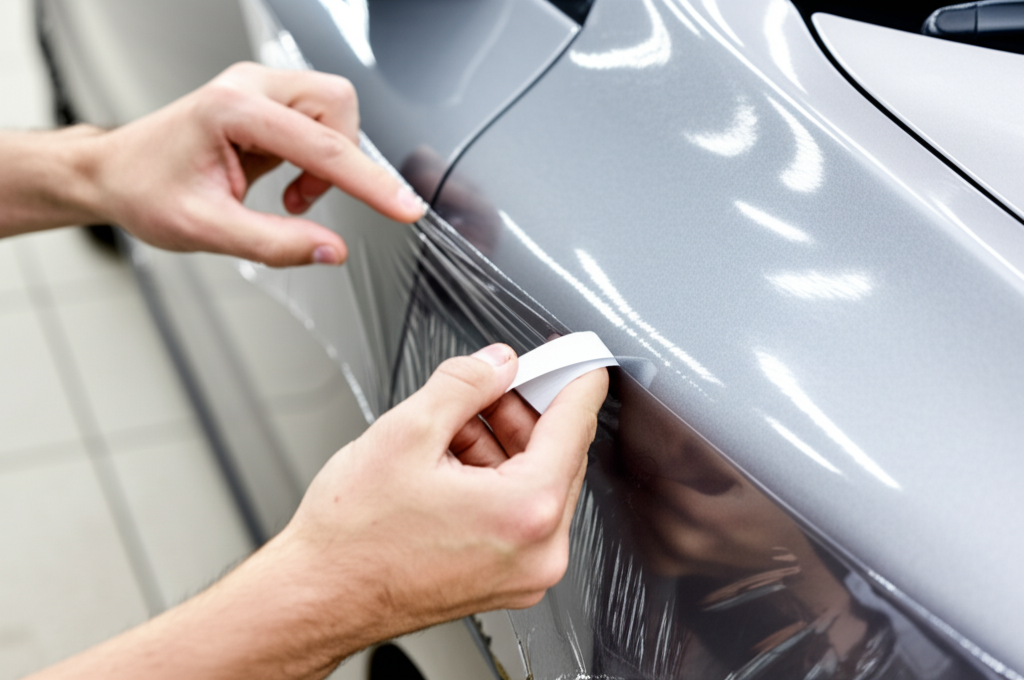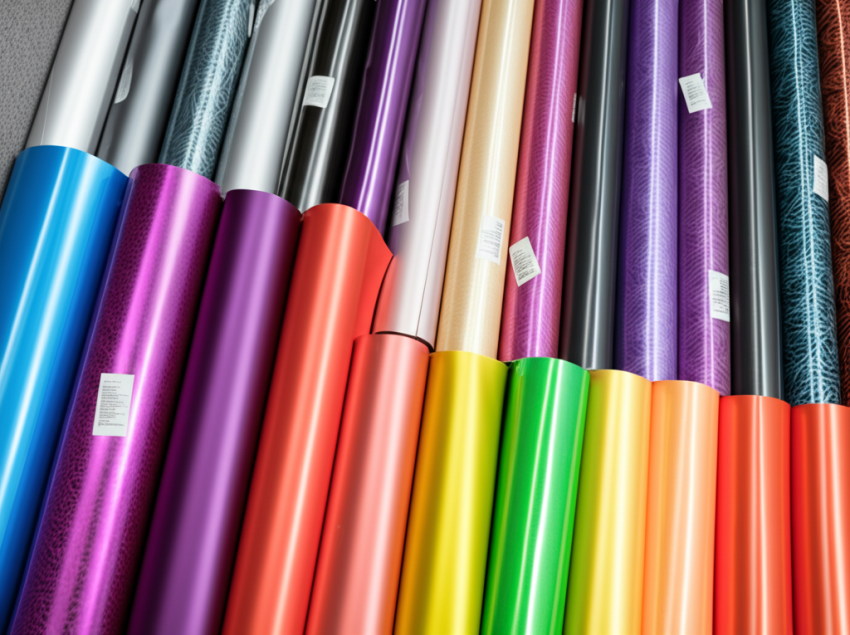Stepping into the vibrant world of car wrapping in Thailand? It’s exciting! Transforming a vehicle’s look with a sleek new colour or a protective layer is a rewarding skill. But walk into any supplier, and you’re hit with a wall of acronyms: TPU, PVC, TPH… What do they even mean? The sheer variety of films can feel overwhelming, leaving many newcomers confused and hesitant. You see rolls of glossy, matte, and textured materials, hear terms like “self-healing” and “cast vs. calendared,” and wonder: which one is right for my future clients? Which one should I learn to master first? This confusion is a common hurdle, but understanding the fundamentals is the key to building a successful wrapping business.

Let’s clear the fog. Knowing the difference between these core film types isn’t just technical knowledge; it’s the foundation for providing excellent service, managing client expectations, and ensuring the longevity of your work. Getting it right means happy customers and a thriving business. Getting it wrong? That can lead to frustrating reapplications, wasted material, and damaged reputations. So, let’s break down these essential film types together.
Khun Art, a young professional in Bangkok, loved his reliable sedan, but its standard silver paint felt… boring. He dreamt of a sleek, deep metallic blue but was hesitant about the permanence and cost of a respray. He’d seen stunning wrapped cars navigating the city’s busy streets and became curious. Walking into a local wrap shop, Art was initially bewildered by the options. “I just want a cool blue,” he explained, “but also something that can handle the Bangkok sun and maybe protect against minor scratches from tight parking spots.”

The installer listened patiently. He showed Art samples of PVC and TPU films. The PVC was budget-friendly, offering a good colour range, but the installer pointed out its limitations regarding durability and heat resistance, crucial factors in Thailand’s climate. Then he presented a high-quality TPU film. “This costs more,” the installer explained, “but it offers superior protection, a richer finish, self-healing properties for minor swirls, and better resistance to UV rays and contaminants like bird droppings.” He also briefly mentioned TPH as a mid-range option. Art, valuing longevity and protection for his investment, decided the TPU film was worth the extra baht. The transformation was remarkable. His once-plain sedan now boasted a stunning, deep blue finish that looked like liquid metal, turning heads wherever he drove. More importantly, Art felt confident knowing his car’s new look was also a protective shield against the elements and daily wear.
Understanding the core differences between these materials is crucial for any aspiring car wrapper. It dictates installation techniques, pricing, durability, and ultimately, customer satisfaction. Let’s dive into the specifics:
PVC (Polyvinyl Chloride) Film
PVC is often the entry point into colour change wraps due to its lower cost. It’s a vinyl polymer that comes in two main forms relevant to wrapping:
- Calendared PVC: Made by extruding the PVC mixture through rollers. It’s generally thicker, less conformable, and more prone to shrinkage over time. Best suited for flatter surfaces and shorter-term applications. It’s the most budget-friendly option.
- Cast PVC: Made by pouring a liquid PVC mixture onto a casting sheet and letting it cure. This process results in a thinner, more conformable, durable, and dimensionally stable film with less shrinkage. It’s better suited for complex curves and longer-term wraps than calendared PVC, but still less premium than TPU.
Pros: Wide colour/finish variety, most affordable option.
Cons: Less durable than TPU, lower resistance to scratches and stains, can shrink or crack over time (especially calendared), less conformable on complex curves, environmental concerns regarding production and disposal.
TPU (Thermoplastic Polyurethane) Film
TPU represents the premium end of the market, especially for Paint Protection Film (PPF), but it’s increasingly used for high-quality colour change wraps too (often referred to as “Coloured PPF” or similar). It’s an advanced polymer known for its elasticity, transparency, and resistance properties.
Pros: Excellent durability and elasticity, superior resistance to scratches, stone chips, stains (bird droppings, bug splatter), and UV damage. Often features self-healing properties (minor scratches disappear with heat). Highly conformable for complex curves. Provides a high-gloss, paint-like finish. Longer lifespan. More environmentally friendly production compared to PVC.
Cons: Significantly higher cost, installation requires more skill and care (often wet application for PPF types), potentially fewer intricate colour/finish options compared to the vast PVC market (though this is rapidly expanding).
TPH (Thermoplastic Polyhybrid/Polyolefin Hybrid) Film
TPH is often positioned as a mid-range option, attempting to bridge the gap between PVC and TPU. It’s essentially a modified PVC film, incorporating some polyolefin or other polymers to enhance its properties, particularly flexibility and durability, compared to standard PVC. However, it’s crucial to understand that TPH is not TPU.
Pros: More affordable than TPU, better flexibility and durability than basic PVC films, decent range of colours available.
Cons: Performance and longevity are generally not on par with true TPU. May still lack the advanced self-healing and stain resistance of premium TPU. Quality can vary significantly between manufacturers. Can sometimes be misleadingly marketed as being very close to TPU.
Comparison Table:
| Feature | PVC Film (Cast) | TPH Film | TPU Film |
|---|---|---|---|
| Base Material | Polyvinyl Chloride | Modified PVC / Polyolefin Blend | Thermoplastic Polyurethane |
| Durability & Lifespan | Moderate (e.g., 3-5 years) | Good (e.g., 4-7 years) | Excellent (e.g., 7-10+ years) |
| Scratch Resistance | Basic / Fair | Moderate / Good | Excellent (often with self-healing) |
| Stain Resistance (Bird droppings, bugs, UV) | Fair / Moderate | Good | Excellent |
| Flexibility & Conformability | Good (Cast) / Fair (Calendared) | Good / Very Good | Excellent |
| Self-Healing Properties | No | Rarely / Limited | Common / Excellent |
| Finish Quality & Clarity | Good (can look slightly ‘plasticky’) | Good / Very Good | Excellent (often indistinguishable from paint) |
| Installation Difficulty | Moderate (dry application typical for colour change) | Moderate | Moderate to High (wet application often needed for PPF types) |
| Price Range (Material Cost) | Low / Medium | Medium | High / Very High |
| Ideal User / Application | Budget-conscious cosmetic changes, shorter-term wraps, commercial graphics. | Mid-range cosmetic changes seeking better durability than basic PVC. | Paint protection, high-end cosmetic changes, long-term applications, customers valuing maximum protection and finish. |
Note for the Thai Market: Given Thailand’s high temperatures and strong sunlight, the UV resistance and heat tolerance of TPU films make them a particularly strong choice for longevity, although high-quality Cast PVC designed for automotive use can also perform adequately if properly maintained.
Hearing directly from car owners who’ve chosen different wraps can highlight the real-world impact:
“I was worried about stone chips on the highway commute outside Chiang Mai. I went with TPU PPF on the front end. Six months later, the film has taken a few hits but my paint underneath is perfect. The peace of mind is incredible!” – Khun Somsak, previously anxious, now relieved.
“My car felt invisible. I chose a vibrant satin red PVC wrap because I loved the colour and the price was right for my budget. It completely changed the car’s personality! It’s been a year, still looks great with regular washing. Makes me smile every time I see it.” – Nong Bee, previously bored, now excited.
“Living near the coast in Phuket, the salt air and sun are harsh. I opted for a coloured TPU wrap. It wasn’t cheap, but the protection against the elements and the ease of cleaning off bird droppings is fantastic. Looks premium, feels protected.” – Mr. David, previously concerned, now confident.
Understanding the differences between TPU, PVC, and TPH is your first major step towards becoming a knowledgeable and trusted car wrap installer in Thailand. Each material has its place, catering to different needs and budgets. As a newcomer, focus on mastering the application techniques, starting perhaps with quality Cast PVC films to build your skills, and gradually progressing to TPH and the premium TPU market as your confidence and expertise grow. Don’t be afraid to ask suppliers questions, request samples, and practice diligently. The Thai market for car customization is growing, and skilled installers who understand their materials are in high demand.
Want to dive deeper, discuss specific brands available in Thailand, or get advice on setting up your toolkit? Reach out!
📱 Want to learn more about car wrap & paint protection?
Feel free to reach us on LINE:

🌐 Official Website: https://tpuwraps.com
- Q: Which film type is absolutely the MOST durable?
- A: Generally, high-quality TPU film offers the best durability in terms of resistance to scratches, impacts, stains, and UV degradation, leading to the longest lifespan, often backed by manufacturer warranties of 7-10 years or more.
- Q: Is a more expensive film always better?
- A: Higher price usually correlates with better raw materials, technology (like self-healing), and longevity (like TPU vs. PVC). However, “better” depends on the client’s needs. A short-term promotional wrap doesn’t require expensive TPU. A high-quality Cast PVC from a reputable brand can be excellent value for cosmetic changes. Focus on matching the right film type and quality level to the specific job and budget.
- Q: How does Thailand’s hot and humid climate affect these films?
- A: Heat and UV exposure are major challenges. TPU generally handles high heat and UV rays best, resisting fading and degradation longer. PVC films, especially lower-quality ones, can become brittle, shrink, or fade more quickly in intense sun. TPH offers better resistance than basic PVC. Proper installation, edge sealing, and regular maintenance (using pH-neutral shampoos, avoiding harsh chemicals) are crucial for all film types in Thailand.
- Q: Can I start by learning to install just one type of film?
- A: Yes, many beginners start by mastering Cast PVC colour change films as they are widely available and use techniques applicable to other films. However, understanding the properties of TPU (especially if offering PPF) is vital, as installation methods (like wet application) can differ significantly. Familiarity with all three allows you to cater to a wider range of customer requests.
Navigating the world of car wrap films doesn’t have to be confusing. By understanding the core characteristics, benefits, and drawbacks of PVC, TPH, and TPU, you equip yourself with the knowledge to make informed decisions – both for your training and for your future clients. Remember Khun Art’s transformation? Choosing the right film wasn’t just about colour; it was about meeting his needs for aesthetics, protection, and longevity within the demanding Thai environment.

As you embark on your journey in the Thai car wrapping industry, embrace the learning process. Master the techniques, understand your materials deeply, and always prioritize quality and customer satisfaction. The ability to confidently explain the differences and guide clients to the best choice for their needs will set you apart. The road ahead is full of colourful opportunities – choose your film wisely, wrap with skill, and build a reputation for excellence.
